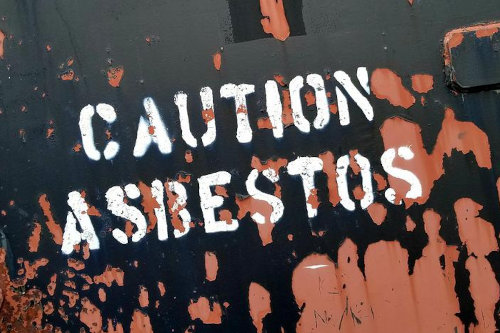Asbestos has been known to cause several health hazards among people of all ages. Everyone must know where to look for and how to identify asbestos to prevent the release of its lethal fibers.

photo credit: Pixabay
People cannot see its fibers since they are so small. It is frequently found concealed in standard building supplies. Additionally, because illnesses take years to manifest, it is impossible to determine when exposure occurred. So how to identify asbestos? Here is everything that one must know about it!
How Does Asbestos Appear?
Asbestos comes in three different colors: brown, blue, and white. Or, to use their proper names:
- Amosite
- Crocidolite
- Chrysotile
While they can be viewed under a microscope, people can’t see asbestos particles with bare eyes. Because asbestos fibers are so tiny and light, they can even float in the air for several days.
Numerous building supplies and materials include asbestos. Cement products, floor tiles, paints, glue, insulation, artex, partitions, doors, and cladding all contain asbestos.
People can almost always find asbestos in building materials. Before the complete asbestos prohibition, it was utilized in many building items and enjoyed great popularity between the 1950s and 1970s. But asbestos-containing cement merely has the appearance of cement, and asbestos pipe lagging merely has the appearance of insulation. Hence, it is challenging to identify.
What Scent Does Asbestos Have?
Many dangerous drugs have a distinct odor that lets people identify them. For instance, people can smell a gas leak even though they can’t see it.
Once more, asbestos fails people. It has no smell, so people can’t identify it by how it smells. People won’t smell it if they enter a building made entirely of it, from the roof to the walls to the fittings and fixtures. The dust smells like other dust materials if anyone drills through asbestos-containing materials (ACMs) and unleashes the lethal fibers.
How To Identify Asbestos?
How can people identify asbestos if they can’t see or smell it? How to tell when someone’s health and future are jeopardized due to the substance?
An asbestos survey is what one can do, to be specific! An asbestos survey is completed by a qualified asbestos professional. The asbestos surveyor will gather the building’s dimensions, construction date, and working dates. This way, they will have a clear idea of the materials that were probably employed during the construction of the building. They will then survey the building to pinpoint the precise location of any asbestos.
Depending on the required survey type, the survey’s scope will vary.
1. Management Survey
An asbestos assessment survey is necessary for non-domestic buildings that are regularly occupied. Schools, offices, hospitals, factories, etc., are included. This would also apply to communal areas of residential complexes.
With this survey’s aid, people can comply with the requirement to handle asbestos. To design an asbestos management strategy, keep track of the state of the materials, determine what action is required, and reduce the hazards.
The management survey is used to find asbestos-containing materials that could pose a concern while the building is being used. With some light sampling, the inspection is primarily ocular. The asbestos surveyor may have to make some assumptions and educated guesses.
2. Demolition And Refurbishment Survey
The survey for renovation and demolition is far more intrusive. The construction industry has the most significant asbestos risk. There have been instances where several construction workers passed away from exposure to asbestos in the past.
Asbestos can be spotted using the demolition and refurbishment survey. This survey will try to find asbestos concealed within the building structure along with materials visible on the surface.
Conclusion
The leading cause of death at work is asbestos, and its fatal fibers are released when materials are disturbed. Mesothelioma and lung cancer are two painful, crippling, and deadly diseases that can be brought on by inhaling these asbestos fibers. Hence, it is crucial to know what materials are used while constructing a building.